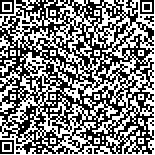| 摘要: |
| 海草床是近海三大典型海洋生态系统之一,具有巨大的碳储备功能,并为众多海洋生物提供重要的栖息场所及食物来源,在维持近岸海洋生态系统平衡中发挥着重要的作用。2016年8月通过对黄海镆铘岛海域的现场调查,发现分布面积为272.84 ha的海草床主要种类为鳗草(Zostera marina)和红纤维虾形草(Phyllospadix iwatensis)。鳗草的分布面积约为177.23 ha,占总面积的65%,主要分布在镆铘岛沿岸的海参养殖池中,红纤维虾形草的分布面积约为95.61 ha,占总面积的35%,主要分布在沿岸的礁石上,呈明显的带状分布。鳗草的平均株高为(86.8±5.8) cm,平均植株密度和生物量分别为(364.0±14.2)株/m2和(528.7±20.5) g DW/m2;红纤维虾形草的平均株高为(112.8±3.8) cm,平均植株密度和生物量分别为(3 087.0±35.4)株/m2和(2320.0±26.6) g DW/m2。红纤维虾形草的分布水深为(1.80±0.04) m,海草床的水体溶解氧含量较高,达到(10.4±0.1) mg/L,分布有鳗草的海参池塘的底质粒径为(4.6±0.1) mm。结合历史资料,发现该海域海草床退化现象十分严重,这除了受自然环境变化的影响外,与过度的人类活动干扰有关。并提出了海草床修复与保护的建议和对策,可为进一步研究与保护该区域海草床生态系统提供基础。 |
| 关键词: 海草床 种类 分布面积 生态特征 栖息生境 镆铘岛 |
| DOI:10.11759/hykx20180803001 |
| 分类号:Q178.53 |
| 基金项目:国家科技基础性工作专项(2015FY110600);国家自然科学基金资助项目(41576112);中央高校基本科研业务费专项(201822021);山东省重点研发计划资助项目(2017GSF217002) |
|
| Quantitative distribution and ecological characteristics of seagrass beds in the coastal area of Moye Island, Yellow Sea |
|
LI Hong-chen, ZHANG Pei-dong, LI Wen-tao, YANG Xiao-long, HU Cheng-ye, LI Chang-jun
|
|
The Key Laboratory of Mariculture, Ministry of Education, Ocean University of China, Qingdao 266003, China
|
| Abstract: |
| Seagrass bed is one of the three typical coastal ecosystems with a huge function of carbon reservation, providing important habitat and food sources to several marine organisms, and playing an important role in maintaining the balance of the inshore marine ecosystem. A field study was conducted in the coastal area of Moye Island, Yellow Sea, in August 2016. Seagrass beds covering approximately 272.84 ha were discovered that consisted of Zostera marina and Phyllospadix iwatensis as the dominant species. Z. marina was distributed in an area of 177.23 ha, which was approximately equivalent to 65% of the total distribution area. These Z. marina plants primarily grow in the farming ponds of Stichopus japonicus in the coastal area of Moye Island. P. iwatensis was distributed in an area of 95.61 ha, which was approximately equivalent to 35% of the total distribution area. These P. iwatensis plants primarily grow on rocky coasts with a marked banding distribution. The average shoot height, shoot density, and biomass of Z. marina were (86.8 ±5.8) cm, (364.0 ±14.2) shoots/m2, and (528.7 ±20.5) g DW/m2, respectively. The average shoot height, shoot density, and biomass of P. iwatensis were (112.8 ±3.8) cm, (3087.0 ±35.4) shoots/m2, and (2 320.0 ±26.6) g DW/m2, respectively. The average water depth of P. iwatensis beds was (1.80 ±0.04) m, with a higher dissolved oxygen content of (10.4 ±0.1) mg/L. The average grain size of farming ponds where Z. marina grew was (4.6 ±0.1) mm. Historical data indicate that seagrass meadows in Moye Island have suffered extensive losses primarily due to excessive anthropogenic activities, except for natural disturbances. Conservation suggestions and actions are being put forward to provide an important basis for further study and for protecting the seagrass ecosystem in this region. |
| Key words: seagrass bed species distribution area ecological characteristics habitat Moye Island |
